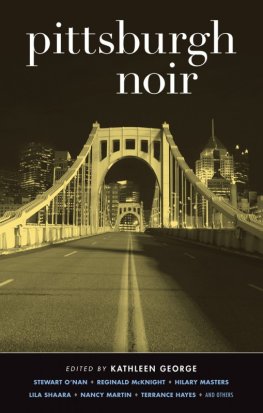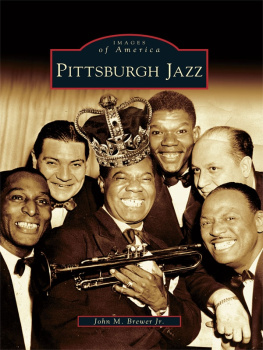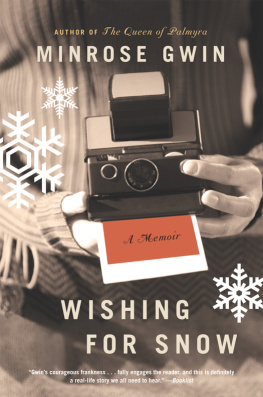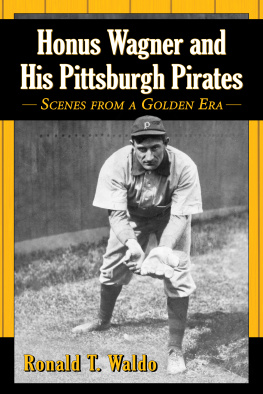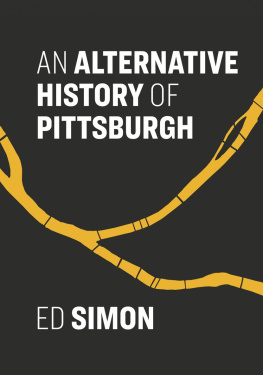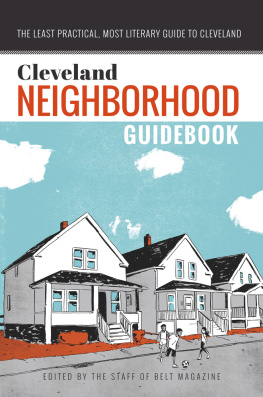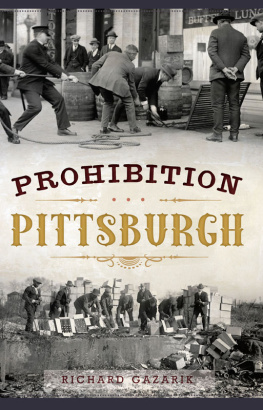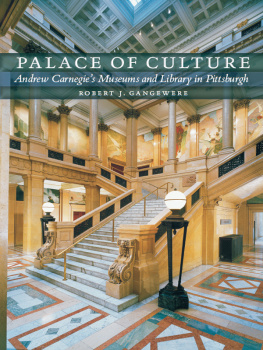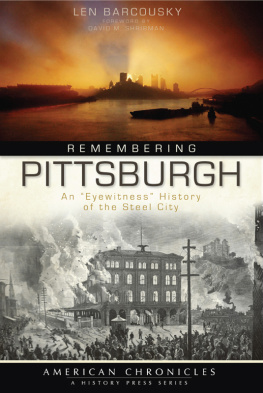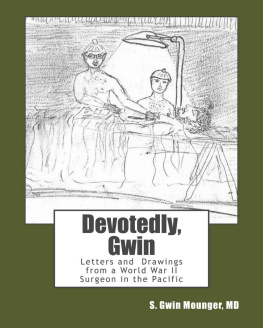THE
PITTSBURGH
NEIGHBORHOOD
GUIDEBOOK
THE
PITTSBURGH
NEIGHBORHOOD
GUIDEBOOK
EDITED BY BEN GWIN
Copyright 2021, Belt Publishing
All rights reserved. This book or any portion thereof may not be reproduced or used in any manner whatsoever without the express written permission of the publisher except for the use of brief quotations in a book review.
First Edition 2021
ISBN: 978-1-948742-71-9
Belt Publishing
5322 Fleet Avenue, Cleveland, Ohio 44105
www.beltpublishing.com
Book design by Meredith Pangrace
Cover by David Wilson
Contents
Ben Gwin
Cameron Barnet
Cameron Barnet
Corine Duval
Lori Jakiela
Dave Newman
Dave Newman
Dave Newman
Brian Broome
Kelly Lorraine Andrews
Cedric Rudolph
Cedric Rudolph
Cedric Rudolph
Matthew Wallenstein
Alona Williams
Jason Vrabel
Mike Good
Mike Good
Mike Good
Lisa Kircher
Jim Daniels
Jim Daniels
Jim Daniels
Ed Simon
Rachel Mennies
Rachel Mennies
Rachel Mennies
Rich Gegick
Shannon Reed
Tuhin Das
Sherrie Flick
Vince Guerrieri
Brittany Hailer
Almah LaVon Rice
Lisa Pickett
Shannon Sankey
Shannon Sankey
Bowie Rowan
Introduction
One of my favorite views of Pittsburgh is driving out of the Fort Pitt Tunnel at night, when the downtown skyline appears out of darkness. Lit up and framed by yellow bridges, the city feels full of possibility.
Possibility is something of a watchword in much of the recent writing about Pittsburghs supposed renaissance. Yet there is a disconnect between the stories of the normal people who live in Pittsburgh and the sponsored content extolling the citys revival. According to the latter, UPMC, Walnut Capital, the tech industry, and the Mayor are saving our city from the brink of a post-industrial hellscape. The reality is much more difficult and complex.
Like most of the country, Pittsburgh suffers from wealth inequality, gentrification, and racism. Theres lead in the water, and we lack reliable public transportation and affordable housing. Development and redlining segregated the city decades ago, and those divisions remain. The police are militarized, and our schools are underfunded.
We started soliciting work for this collection in spring of 2019, and all the submissions were sent in before the coronavirus pandemic and George Floyds death. But while there arent direct accounts of the protests or sheltering in place, the problems plaguing Pittsburgh and other American cities that have been further exposed since March 2020 are evident in these stories. A feeling of unrest runs through much of this book.
Jason Vrabel and Brian Broomes essays directly address displacement and gentrification during our awkward in-between phase of urban renewal. Brittany Hailer and Jim Daniels write about addiction and the ongoing opioid epidemic. There are essays about work and family by Vince Guerrieri and Lori Jakiela. Bowie Rowan and Ed Simon write about mass shootings and the communitys response.
There are more sentimental pieces, too. Multiple works mention of the fascinating steps to nowhere scattered along the hillsides. Stories of fistfights and heartbreak and hope set against a city with an identity crisis. I love baseball, so I am grateful to include Shannon Reeds story about our sad franchise and its beautiful ballpark. As a lifelong Pirates fan, walking across the Clemente Bridge to see Andrew McCutchen and the Pirates in a pennant chase after twenty years of losing was a surreal, fleeting experience that I cherish.
Also included in the anthology are essays and poems set in the surrounding towns and suburbs. The story of Pittsburgh would be incomplete without Braddock, Trafford, Penn Hills and others.
I read and accepted the work of many writers I didnt know before curating this guidebook. That was the best part of the editing experience. I am also pleased to include stories from a few dear friends and mentors. I hope the work in these pages paints a full picture of life in the region. And that it speaks to who we are as students, artists and workers in the Rust Belt and what it means to embody the region. There is more to our city than the downtrodden, Trump-supporting coal miner, and the transplant tech worker who complains about air quality. Pittsburgh is resilient.
I grew up in New Jersey, but my daughter has spent her whole life here. For her middle school writing class, she was assigned a neighborhood essay. She wrote about having two neighborhoods. She wrote about Evans City, where her mom and grandmother live. Riding her bike down the big hills to her friends house, and going to the ice cream place in town. She wrote about our house in Bloomfield, playing catch in Friendship Park, her cat, and walking to the gas station on Liberty to get hot fries. She wrote about how great it was to live in the city and the country. Her mom died in July 2018, and the support we received from our community was humbling.
As my daughter has grown into a tough and compassionate teenager, shes embraced the city. We talk about different bus routes and the fastest ways to get places. We spend summers at her softball games around Pittsburgh. She and her classmates protest climate change and police brutality. My daughters generation gives me hope, just as Im hopeful that this wave of civil unrest can lead to systemic change. When in-person classes resume, my daughter will return to school downtown, between the bridges, with a view of the skyline.
Swisshelm Park
CAMERON BARNET
Its easy to love whats easily missed:
If this elbow of the city could bend itself
open, loose with the weight of its history,
loose with the long wind of Commercial Street
like an umbilical cord, loose with Whipple Street
steep slopping into Edgewood, you might feel
the flex of the Monongahela passing by, a figure-8
of fancy homes, rows and rows of neighbors
like aisles passing over a petite plateau, the hum
of some distant freight moving through the night,
and you might feel the amenity afforded
by this placethe small delight of being forgotten.
Its easy to love whats easily missed:
the air raid siren wailing long into a new millennium,
a highway screaming by, a river sleuthing out
this semi-suburb, well known woods wrapping
themselves around the neck of the neighborhood,
my childhood bike doing loops around the low and long hills
of concrete, tire tracks of a third-generation boy
scraped into the blacktop, third iteration of integration
into Windermere Drive, home in the crook
of the road, home by an island in the road, island





